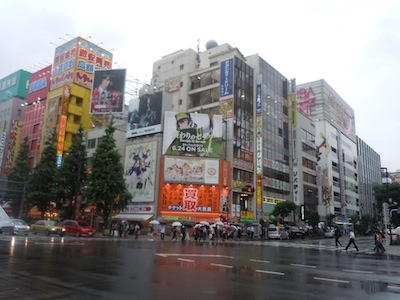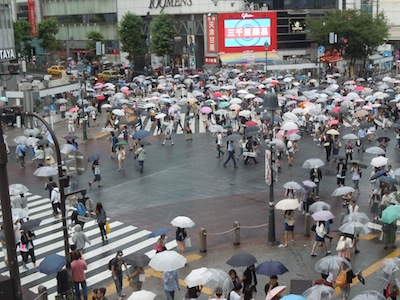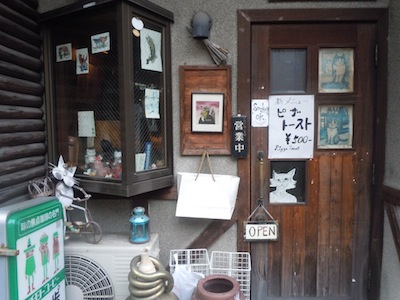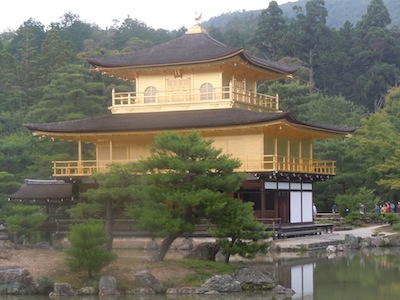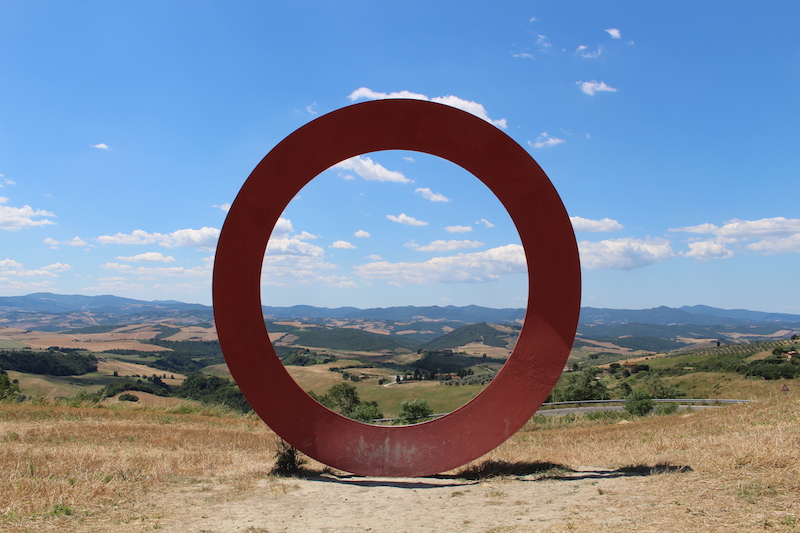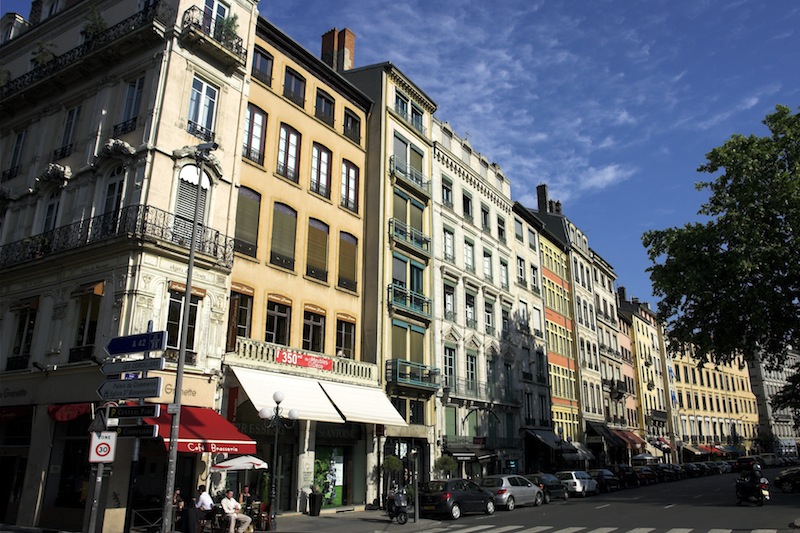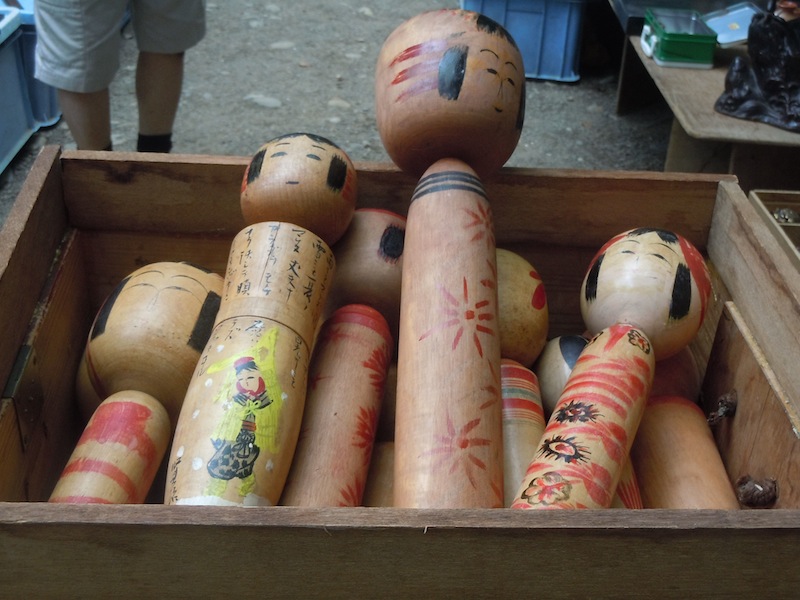
Claudiaexpat made an 8 days trip to Japan, and she is happy to share what she liked and her tips to make your traveling in this fabulous country even more enjoyable. Japan is a big country with a lot to see, so here she just covers a tiny part of the experience. W Japan!
Before you go, it is important you make the Japan Rail Pass, https://www.jrpass.com This pass will allow you to travel on most trains in and outside Tokyo, saving a lot of money on the efficient but expensive Japan railway line. You can’t buy the pass in Japan. You can either order it online, and have it delivered at your place (almost anywhere in the world) by FedEx (allow 2 full working days to get it) or buy at a Japanese travel agent in your town (here you find the complete list in the world).
Before using the pass you have to exchange it. This is usually done at the airport upon arrival (in Narita, the JR office is in the basement, well indicated and easy to find). The pass is valid for one week from the date of issue (which you can chose) and needs to be with you all the time when you travel by train. You do need to issue a ticket before traveling anyway. Its cost will of course be covered by the pass, but it will reserve a seat on the designated train. You can also travel without booking a seat (the first three wagons are for unreserved seats, you just hop on and seat wherever you want to).
Narita Airport is one of the most intelligent and best organised airports I have ever seen. You won’t have any difficulty whatsoever to move within it and to get to and from Tokyo. Plus, Japanese are absolutely helpful and kind, they do whatever they can to help you.
I visited three places: Tokyo, Kyoto, Hiroshima.
Tokyo
I slept in two different hotels. The first one (and highly recommended) was the Edo Sakura. It’s on the Hibyia Subway Line, Iriya stop (the one after Ueno). Typical Japanese abode, warm welcome, nice and cozy. The second one was the Akihabara Washington Hotel, on the Akihabara stop, modern and impersonal, but great service and perfectly equipped with all comforts (besides being in a very interesting area).
Moving around is easy both by subway and city trains. It just takes a while to find your way in the colourful spider web of the lines, but one learns fast and if you don’t understand, there is always someone ready to help you and even to physically take you to the stop or the machine to buy your ticket. Machines are in English, and all the names of the stations, too.
Tokyo is huge and it has a lot to see. Much depends on your tastes and interests. Even in a few days, though, you can get an idea of the most modern, shiny and crazy Tokyo, and of the old and traditional one. This is what I did:
I visited the Meiji-jingu shrine, which I was told is one of the most beatiful in Tokyo. I did not regret it. The entrance and the park surrounding it are great, and the atmosphere at the shrine is suggestive. From there, I walked to Shibuya – it’s a short stretch and I love walking a lot, I think that’s the best way to really get the atmosphere of a city. Shibuya has the famous crossing called “Scramble”, apparently the busiest in the world. I literally fell in love with the area and could not get enough of seeing the perfect alternate crossing of people and cars. It was a rainy day, and watching that army of umbrellas moving together was incredible. I suggest you get a coffee at the Occitane bar, trying to get a seat at the window – it’s lovely. The whole area around Shibuya is worth a stroll, with its colourful streets, neon and giant video screens. I also enjoyed Shinjuku at night – it’s like being in a movie.
Akihabara, where I stayed in the second part of my trip, is another crazy place. There is a part of the neighbourhood called Electric Town, because apparently it’s the place where you can find all sorts of bargains on new and used electronics. Again, huge neon screens and giant videos overwhelm you.
If you continue from Electric Town to Jimbocho, you’ll find a street packed with second-hand books, most of them in Japanese of course, but well worth a visit for the atmosphere. One of these shops is called Ohya Shobo, and it’s like going back in time; it has loads of vintage maps, Edo-era mangas and old books.
If you continue east from there, there is another lovely area: a park with the Yasukuni-jinja, a memorial shrine to Japan’s war victims (look for the story and the polemics surrounding it, they are interesting). In this park there is a beautiful antiques market on Sundays. Further east, you get to Kagurazaka, and old geisha neighbourhood. It is bit difficult to find the cobblestone streets where they used to live and work, and it’s nothing spectacular, but the whole area is pleasant, with little shops, traditional restaurants and quite corners.
I love diving into the past, so I paid and extensive visit to Asakusa, Ueno and Yanaka. Asakusa has a lovely shrine. To reach it, you pass through a touristy street with stalls of any kind of Japanese thing that you might think of. Ueno and the National Museum are not very far from the Asakusa Shrine. If you love walking, it takes about 20 minutes to reach the Tokyo National Museum. This is a superb museum, which will take you a long time to visit if you plan to see it all. Since my time was limited, I did the second floor and part of the ground floor, which gives a satisfactory idea of Japanese history and arts.
There is a lovely park in front of the museum, where the zoo is located. I have not visited it (though I was tempted to see the two Pandas it hosts), first because zoos deeply depress me, and second because I badly wanted to visit Yanaka, a part that I heard still shows the atmosphere of traditional Tokyo.
There is, indeed, a nice walk you can do in Yanaka. It is a very different Tokyo from the one you experience in Shibuya – one-storey houses, lots of shrines, small and quite streets. In one of these we found a pub, called Rampo, which is an experience in itself: a sort of creative mixture of Japanese style, African masks, cats-lovers’ collections, and jazz music. A perfect place to stop for a refreshing beer and to rest a little. It takes about two hours to complete the walk in Yanaka, and depending on which day and time of the day you visit it, you might be able to stop at some art galleries and to visit the inside of the shrines (most of them close between 4 and 5pm).
Kyoto
I slept in a lovely Japanese style apartment, one of the many in a peaceful street of low houses. Perfectly organized (you collect the information about the place at an agency close to Kyoto’s central train station) and practical under many aspects, including its location, the NISHI-NO-TAI is perfect if you want to relax in a relatively spacious place after touring like mad in beautiful Kyoto.
Let me start by suggesting that you plan thoroughly in advance what you want to see. Unless you have many days to spend in this beautiful city, you will have to make up your mind beforehand and plan your moves carefully because many of the most interesting spots are far from one another, and some even outside Kyoto. Also bear in mind that it takes quite a while to move around: buses work impeccably, but they stop frequently on the way and the city is quite spread out. There are many resources in the Internet that help you find out beforehand what is worth the while to visit. Here is what I did (in no particular order):
- Gion and Ponto Cho: you can start from Ponto Cho, a traditional district crossed by a narrow alley dotted by red lantern, and walk to Gion, the most famous (and wonderful) geisha district. In Ponto Cho there are many restaurants and bars, many of whom have a terrace overlooking the river. It is very nice to have dinner there, though a bit expensive. Restaurants in Gion are also overly expensive, but you can find nice and cheaper places if you go left at the end of Ponto Cho. I ate sushi on the conveyor belt at Musashi Sushi, fun and cheap. Gion is amazing especially at night.
- Daitoku-ji is a lovely group of Zen temples with beautiful gardens
- Arashiyama, the magical bamboo forest in the Arashiyama and Sagano district. I had expected it to be bigger, but it still a very beautiful place, though the presence of many tourists can spoil the atmosphere. At the end of it, you can visit Okochi Sanso, the villa of a Japanese actor, which is now an art foundation. Lovely gardens and beautiful view.
- Sanjusangen-do is probably the place I loved the most. It is a temple that hosts 1001 statues of Kannon, the goddess of mercy. It is a narrow and long alley where the statues stand very close one another and surround the biggest Kannon. It creates a weird atmosphere. You can’t take pictures there.
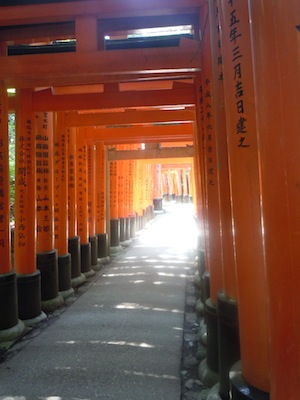 Kyomizu-dera is a temples that requires a bit of to be visited because it hosts many interesting points and walks. Take your time to visit the main temple, the spring of holy water, and the cemetery. Before or after visiting the temple, go to the two adjacent streets, they are lovely, with their wooden houses, traditional shops and interesting restaurants.
Kyomizu-dera is a temples that requires a bit of to be visited because it hosts many interesting points and walks. Take your time to visit the main temple, the spring of holy water, and the cemetery. Before or after visiting the temple, go to the two adjacent streets, they are lovely, with their wooden houses, traditional shops and interesting restaurants.- Fushimi Inari Taisha, a fabulous place. Allow plenty of time to visit it because the complete walk total 4 kms, mostly flanked by red torii (traditional Japanese gate) that make the atmosphere magic.
- Kinkaku-ji is the Golden Pavillon that served as retirement villa of the shogun Ashikaga Yoshimitsu. Today it’s a Zen temple and it’s suggestive because its two upper floors are covered in gold leaf. Despite its beauty I did not enjoy it as much as I did the other temples; in the end it is a quick visit and you can’t get too near it.
- Tetsugako-no-Michi (Path of Philosophy): it’s a nice stroll but if you are tight on your schedule I do not suggest you to put it amongst your priorities. I suppose the best time to visit this pedestrian area is when cherries blossom or in autumn, when the tree leaves are red and yellow. You walk beside a canal which is flanked by little wooden houses and some traditional shop.
My tips for Kyoto:
- plan well in advance! But give yourself the time to get lost amongst the temples and discover the beauty of the most hidden tracks
- be careful to bicycles – it sounds absurd, but they do constitute a risk. Most bikers travel on pavements, and if you move suddenly without looking at your back, you might get hit. Always look behind yourself when you walk on pavements, and left and right when you cross the street
- you move around a lot by bus. The cost of a one-way ticket is fixed (240 yens – you pay at the end of the trip, before leaving the bus. You must have the exact amount in coins, but there is a changing machine besides the driver if you only have notes), and you have to pay every time you board a new bus, no matter how long your journey. I suggest you buy a daily card (500 yens), you find it the main station and in other big bus stops (there are special machines for it).
- You’ll be entering lots of temples and you’ll be required to take your shoes off. Wear shoes without strings to save time
Hiroshima
I slept in a tiny but decent hotel, Sansuy Riokan. The owner is a lovely and efficient lady, and the location is great for visiting the most popular places of interest.
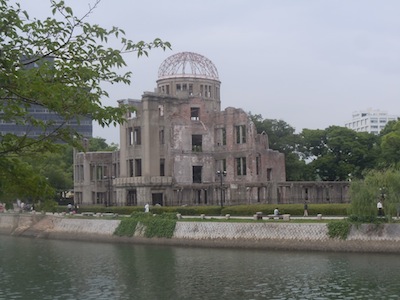 Hiroshima is a weird experience. When you get off the train station, it’s like plunging in the seventies. The city was obviously completely rebuilt after the bomb, and it seems like the whole effort concentrated at a given time, and then stopped to give people a chance to give the city a soul. The atmosphere is friendly but strangely still.
Hiroshima is a weird experience. When you get off the train station, it’s like plunging in the seventies. The city was obviously completely rebuilt after the bomb, and it seems like the whole effort concentrated at a given time, and then stopped to give people a chance to give the city a soul. The atmosphere is friendly but strangely still.
I visited the Peace Memorial Museum, which is upsetting though lacking in historical context. You see lots of objects that remind you of the destruction caused by the bomb, but there is hardly no explanation of what was going on amongst the powers involved in the war at the time of the bomb. I found the stories about children particularly heart wrenching, and walked away with the feeling that despite all the destruction caused by wars, we still have a long way to go to make this planet a peaceful and safe place.
Outside the museum, the big park hosts several memorials, but the most striking point is the Hiroshima Peace Memorial. This UNESCO World Heritage Site is the ghastly ruin of an Exhibition Hall designed by the Czech architect Jan Letzel, which survived the destruction. It is the only building which was not completely destroyed by the bomb, and though it was long discussed whether to preserve it or not, it was ultimately kept as it is as a memorial of the bomb and symbol of peace. Take your time to walk around it and breath the atmosphere.
Apart from the above-mentioned, there is not much to see in Hiroshima. But don’t leave the place without tasting a delicious Okonomiyaki, the city specialty! It’s a sort of cabbage omelette that you cover with whatever you like – meat, cheese, prawns, etc. A real treat.
Claudiaexpat (Claudia Landini)
September 2015
Photos ©ClaudiaLandini

